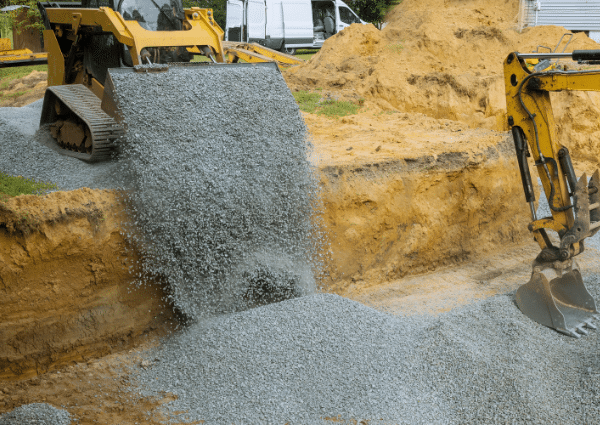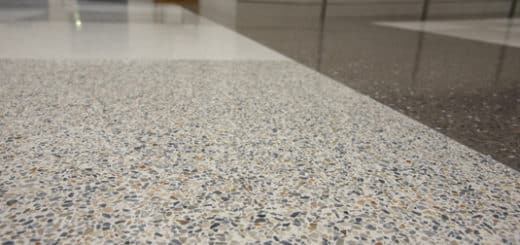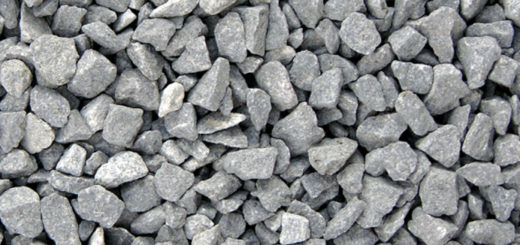Backfill Materials | Ensuring Stability and Durability
In construction, the use of appropriate backfill materials plays a crucial role in ensuring the stability, durability, and overall success of a project. Whether it’s for foundation support, trench filling, or retaining wall construction, selecting the right backfill material is essential.
In this article, we will explore the different types of backfill materials, their properties, factors to consider when choosing them, installation techniques, and sustainable practices. By understanding the significance of backfill material and making informed decisions, builders can optimize construction outcomes and long-term performance.
What are Backfill Materials
Backfill materials refer to the substances used to fill the excavated areas around structures or utility trenches during construction. The primary purpose of backfilling is to provide support, increase stability, and prevent settlement or collapse of the surrounding soil.
The selection of suitable materials for backfilling depends on various factors such as site conditions, project requirements, and environmental considerations.
Backfill materials are integral to the success of construction projects for several reasons. First and foremost, they provide structural support and distribute loads evenly, reducing the risk of uneven settling or foundation failure.
Additionally, these materials act as a barrier against water accumulation, preventing moisture-related issues like erosion, swelling, or frost damage. They also enhance the overall stability of the structure and contribute to its long-term durability.
Types of Backfill Materials
- Natural Soil: Natural soil is commonly used as a backfill material when its characteristics meet the project requirements. However, its suitability depends on factors such as soil type, compaction properties, and drainage capacity.
- Gravel: Gravel is a popular backfill material due to its excellent drainage properties. It allows water to pass through easily, reducing hydrostatic pressure and minimizing the risk of water-related issues.
- Sand: Sand is another commonly used backfill material known for its compaction properties. It provides good stability and helps achieve proper compaction when used correctly.
- Crushed Stone: Crushed stone is often used as backfill material in situations where stability and load-bearing capacity are crucial. It offers excellent compaction and drainage characteristics.
Properties and Characteristics of Ideal Backfill Materials
When selecting backfill materials, it is important to consider their properties and characteristics. The following factors play a significant role in determining the ideal backfill material for a specific project:
Compaction
An ideal backfill material should be easily compactable to achieve the desired density. Proper compaction ensures improved load distribution and minimizes settling over time.
Permeability
Backfilling materials should possess adequate permeability to allow the passage of water and prevent the accumulation of hydrostatic pressure. This helps maintain the stability of the surrounding soil and prevents water-related damage.
Stability
Backfill materials should have good stability to withstand external forces and prevent settling or shifting. They should be able to maintain their integrity and provide consistent support to the structure.
Factors to Consider when Choosing Backfill Materials
Selecting the appropriate backfill material requires careful consideration of various factors:
- Site Conditions
The geological and environmental conditions of the construction site influence the choice of materials. Factors such as soil composition, groundwater level, and seismic activity should be evaluated to determine the most suitable option.
- Project Requirements
The specific requirements of the project, such as the type of structure, load-bearing capacity, and intended use, will influence the selection of backfill materials. It is important to choose materials that meet the project’s technical specifications and performance standards.
- Environmental Impact
Consideration should be given to the environmental impact of the when selecting the backfilling materials. Some materials may have ecological consequences, such as leaching chemicals into the soil or affecting nearby water sources. Opting for eco-friendly alternatives or implementing mitigation measures can help minimize the environmental footprint.
- Cost
The cost of backfill materials can significantly impact the overall project budget. It is important to balance the performance requirements with cost-effectiveness and explore options that meet both criteria.
- Availability
The availability of suitable materials can vary depending on the location. Considering locally sourced materials can minimize transportation costs and environmental impact.
- Compatibility with Surrounding Soils
Materials should be compatible with the surrounding soils to avoid any adverse interactions or differential settling. Conducting soil testing and analysis can help determine compatibility and prevent potential issues.
Common Applications of Backfill Materials
Backfill materials find applications in various construction scenarios:
- Foundation Backfill
Backfilling around foundations provides support and stability to the structure. It helps distribute the load evenly and prevents differential settling, ensuring the integrity of the foundation.
- Trench Backfill
When excavating trenches for utility installations, backfill materials are used to refill the space around the utilities. This provides protection, stability, and insulation for the utilities while facilitating proper compaction.
- Retaining Wall Backfill
Backfill materials play a critical role in the construction of retaining walls. They provide structural support and prevent soil erosion or collapse behind the wall, maintaining its stability and integrity.
Proper Installation Techniques for Backfill Materials
To ensure the effectiveness of backfilling materials, proper installation techniques should be followed:
- Compaction Methods
Appropriate compaction techniques, such as mechanical compaction or vibration, should be employed to achieve the desired density and minimize settling. Adequate compaction enhances stability and load-bearing capacity.
- Moisture Control
Managing moisture content during backfill installation is crucial. Excessive moisture can hinder compaction and lead to settlement issues. Controlling water content through proper drainage or moisture barriers is essential for optimal performance.
Sustainable Backfill Practices
In recent years, there has been a growing focus on sustainable construction practices, and backfilling is no exception. Implementing sustainable approaches can offer benefits such as reduced environmental impact and resource conservation:
- Use of Recycled Materials
Using recycled materials, such as crushed concrete or reclaimed asphalt, as backfill can contribute to waste reduction and promote circular economy principles. These materials can provide suitable properties while minimizing the need for extraction of virgin resources.
- Geosynthetics
The use of geosynthetic materials, such as geotextiles or geogrids, in combination with backfill materials can enhance their performance. Geosynthetics improve drainage, reinforce stability, and provide additional benefits like erosion control and filtration.
Incorporating the appropriate backfill materials not only provides structural support but also ensures the integrity of foundations, trenches, and retaining walls. It mitigates the risk of settling, erosion, and water-related damage, thereby prolonging the lifespan of the structure.
By making informed choices and adhering to best practices, builders can enhance the overall quality and reliability of their construction projects.
FAQs
1. What is the purpose of backfill materials in construction?
Backfilling materials provide support, stability, and load distribution in construction projects. They prevent settling, erosion, and water-related damage, ensuring the integrity and longevity of structures.
2. How do I choose the right backfill material for my project?
Consider factors such as site conditions, project requirements, and environmental impact. Evaluate properties like compaction, permeability, and stability. Conduct soil testing and analysis to ensure compatibility with surrounding soils.
3. Can I use recycled materials as backfill?
Yes, using recycled materials as backfill, such as crushed concrete or reclaimed asphalt, can be a sustainable practice. It reduces waste and promotes resource conservation without compromising performance.
4. What are geosynthetics, and how do they enhance backfill materials?
Geosynthetics are synthetic materials used in combination with backfilling materials to improve performance. They enhance drainage, stability, erosion control, and filtration, offering additional benefits to the construction project.
3. Are there eco-friendly options for backfill materials? Yes, using recycled materials like crushed concrete or reclaimed asphalt as backfill can reduce waste and promote sustainability. Additionally, incorporating geosynthetics can enhance performance and environmental benefits.
5. Can backfilling materials prevent water-related issues? Yes, backfilling materials with good drainage properties, such as gravel and sand, can allow water to pass through easily, reducing hydrostatic pressure and minimizing the risk of water-related damage.
4. How important is proper compaction of backfill materials? Proper compaction ensures improved load distribution and minimizes settling over time. It is essential for achieving the desired density and stability of the backfilled area.




